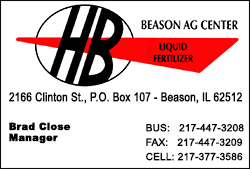|
 Fertilizer is always an area of many questions. The place to
start is a soil test. This will tell you where you are starting
from. Basic soil test levels for phosphorus, potassium and soil
pH should be in the neighborhood of 40, 350 and 6.1,
respectively. These numbers will provide a great environment for
grass. Phosphorus and potassium are on a pound-per-acre basis.
This must be considered if you use labs that report in parts per
million, which will give numbers half as large. Grass will
really grow in very poor conditions, but it certainly won't have
that manicured lawn look many strive for. Fertilizer is always an area of many questions. The place to
start is a soil test. This will tell you where you are starting
from. Basic soil test levels for phosphorus, potassium and soil
pH should be in the neighborhood of 40, 350 and 6.1,
respectively. These numbers will provide a great environment for
grass. Phosphorus and potassium are on a pound-per-acre basis.
This must be considered if you use labs that report in parts per
million, which will give numbers half as large. Grass will
really grow in very poor conditions, but it certainly won't have
that manicured lawn look many strive for.
Lacking a soil test,
or being at recommended fertility levels, general maintenance
applications provide a pound each of nitrogen, phosphorus and
potassium per 1,000 square feet of lawn area in May and again in
September. Really lush lawns will usually have twice as much
nitrogen applied in a season, but split among four applications.

If you decide to try late seeding this spring, remember a
couple of things related to weed killers. First, you can't use
crabgrass preventer in the spring if you put down seed. The
crabgrass preventer doesn't know the difference between grass
seed and weed seeds. The second rule is to mow the new seeding
at least three times before trying any broadleaf weed killer.
Generally this means spring broadleaf control doesn't happen
when you seed in the spring. The end result is if you seed in
the spring, you control weeds in the fall. Seed in the fall, and
you control weeds and crabgrass in the spring.
If you do plan to use a crabgrass preventer, time it so it is
on about when the forsythia blooms. That is assuming it actually
blooms this year. Many of the flower buds were cold-damaged in
the winter we just went through. This would be the approximate
soil and air temperature needed for the crabgrass to germinate.
About now is a good guess, but the date can vary widely with the
weather. Many crabgrass preventers also only last for four to
eight weeks, so plan on repeating the application in June
anyway.

If you have missed some early germinating crabgrass, you can
try one of the post-emergence chemicals —
put on the actual crabgrass when it is small —
such as DSMA or MSMA. They may temporarily discolor lawns, and
all the statements about new seedings apply to these as well.
One last item for the week. Many lawns have brown spots or
patches. In most cases these are a warm-season perennial grass
such as nimblewill. There is no selective control for these
grasses, meaning glyphosate (Roundup). These spots green up
slowly and brown out early. The best plan is to spray them in
late July when they are growing, then put down new seed in
mid-August.

[to top of second column] |

Early spring lawn weed control
Each year, the winter annual weeds chickweed and henbit run No. 1
and 2 in the early spring as lawn and garden weeds. Winter annual
weeds can actually germinate in the fall, carry through the winter,
then get going very early in the spring. They also are done by the
heat of the summer, leaving seed to germinate again later in the
fall.
Right now chickweed stands out in yards because it is quite
abundant and has a lighter green color than grass and most other
weeds. It is even evident as grass is just beginning to green up.
There are two types: common chickweed and mouse-ear chickweed.
Henbit is easier to identify since it has purple flowers and smells
like mint. It is very noticeable right now.

Chickweed
The straight 2,4-D that is used on dandelions seems to act like a
fertilizer for chickweed and other problem weeds. The 2-4D is a
growth regulator, and if it doesn't actually kill a weed, it does
make it grow faster. Combinations that contain 2,4-D, MCPP and
dicamba are rated very effective on chickweed, henbit, red sorrel,
purslane, white clover and others. These combinations are sold under
several different trade names. You can find these at most hardware,
discount, and lawn and garden stores. Just check the label under
active ingredients and check for two long chemical names and dicamba.
You can also check to see that it says it will control chickweed and
henbit.
This group of chemicals is effective in the 50-degree range and
up. It just takes a lot longer for control with very cool
temperatures. Remember that the control time for most broadleaf
weeds is early May. As with any chemical control, read and follow
label instructions very carefully. On these product labels there
will be some cautions that you should be aware of concerning injury
to sensitive plants. This is because dicamba can drift as a vapor
for a few weeks after you apply it if the weather gets hot and
sunny.
[By
JOHN FULTON,
University of Illinois
Extension director for Logan, Menard and Sangamon counties]
 |